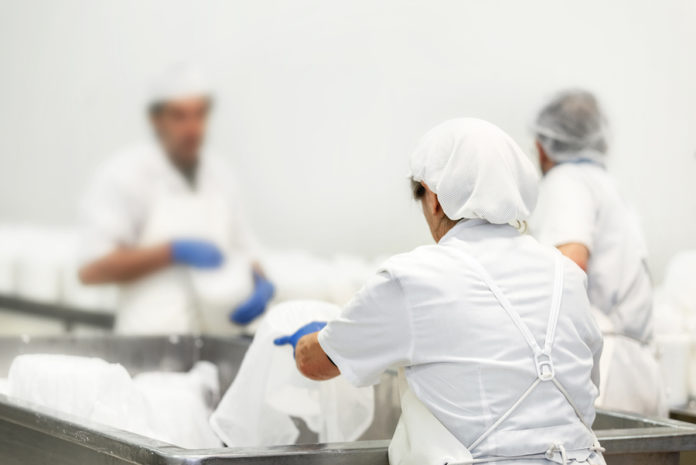
Who are the approximately 3.4 million workers in the U.S. food production system? And what risks do COVID-19 pose for them? The nonprofit KFF (Kaiser Family Foundation) did an analysis of the 2018 American Community Survey (ACS), 1-year file, to determine the characteristics of the food production workforce.
The following table summarizes some of the characteristics compared to the overall workforce.
| Characteristic | Food production workers | All workers |
| Male | 69% | 52% |
| Over age 50 | 33% | 33% |
| White | 51% | 62% |
| Black | 10% | 12% |
| Hispanic | 34% | 17% |
| Other race/ethnicity | 6% | 9% |
| Not a U.S. citizen | 22% | 8% |
| Speak a language other than English at home | 37% | 22% |
| Less than fluent in English | 25% | 8% |
| Employed full-time | 82% | 76% |
| Household income (HI) below 200% of Federal Poverty Level (FPL) | 29% | 19% |
| White workers with HI below 200% of FPL | 18% | |
| Black workers with HI below 200% of FPL | 35% | |
| Hispanic workers with HI below 200% of FPL | 44% | |
| Employer-sponsored health insurance | 59% | 68% |
| No health insurance | 17% | 10% |
| Uninsured white workers | 9% | |
| Uninsured black workers | 16% | |
| Uninsured Hispanic workers | 31% | |
| Live outside of metro areas | 29% | 13% |
How do these characteristics contribute to the risks of COVID-19 for the workforce?
“The data paint a portrait of workers who have limited ability to absorb income decreases, creating disincentives for them to miss work even if they feel ill, and who may face barriers to care due to lack of insurance and immigration-related fears,” states a KFF press release.
For workers who don’t have paid sick leave, missing work means lost pay that can cause financial challenges and an inability to pay for basic needs. The high number of food production workers who are not U.S. citizens may increase these economic difficulties because public programs and federal financial relief have restrictions on immigrant eligibility.
Companies can take an active role to help alleviate the challenges by having programs, including paid sick leave, to actively encourage workers with symptoms to stay home. Companies also need to avoid incentives that might encourage symptomatic workers to work. Diversity in the food production industry means it’s important for companies to do worker outreach and education in linguistically and culturally appropriate ways.
The high uninsured rate for food production workers is another problem. They may have trouble obtaining testing and treatment. Federal legislation does provide resources to pay for tests for uninsured people. However, workers may not know where to get a test or may fear they will have to cover the cost. Getting treatment can also present challenges. Although there is federal funding for reimbursing providers to treat uninsured COVID-19 patients, questions exist about whether enough funds are available.
Immigrant workers also face two other potential barriers to getting tested and receiving treatment. The first is limitations on immigrant eligibility for health coverage. The second is workers’ fears of negative consequences for themselves or the immigration status of a family member.
Another consideration, given the number of people of color in the food production industry, is that outbreaks could increase the already disproportionate effect of COVID-19 on people of color. The situation could widen already existing and underlying health, economic, and social disparities.
Also, outbreaks among the many food production workers who live outside of metro areas could create challenges for rural communities. Concerns include lack of hospital capacity and an older population with more underlying health conditions.
Addressing the needs of food production workers “may help protect the health and financial stability of workers,” concludes the KFF report. It will also play “a role in preventing widening of underlying racial and ethnic disparities in health, social, and economic factors.”







